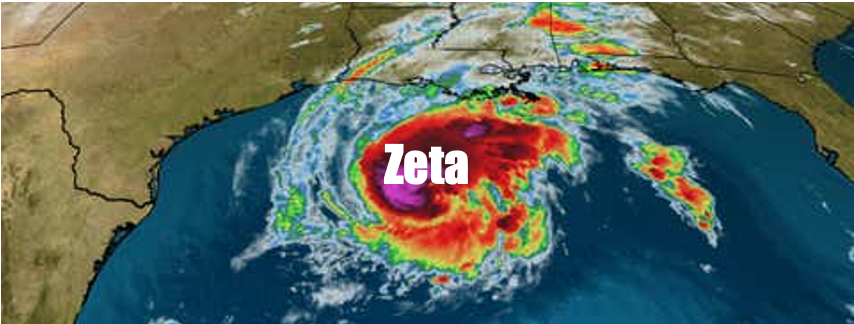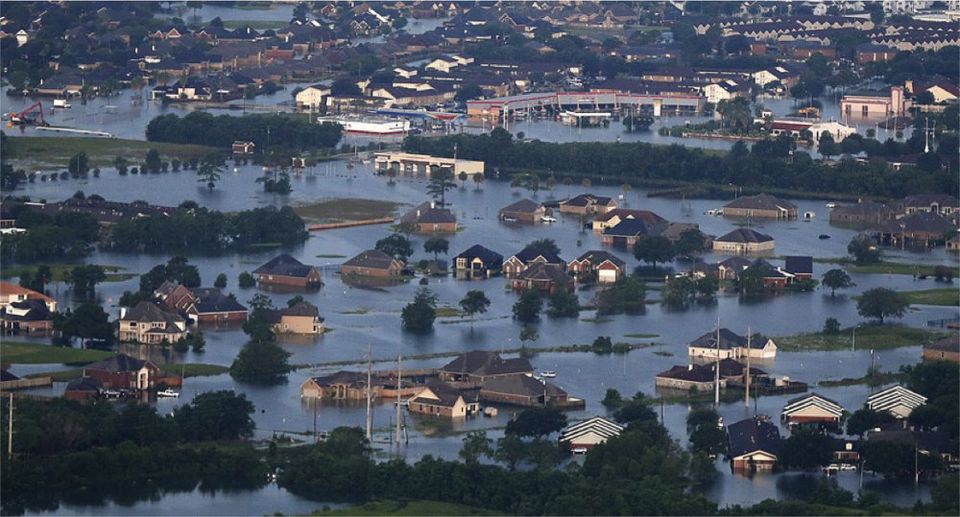FEMA Claims
Jeff Esper
RWH Myers is a professional loss accounting firm that specializes in preparing claims for FEMA and commercial insurance matters. Having decades of experience in handling catastrophic property damage claims, RWH Myers has been through the process of assisting organizations with financial recovery in the aftermath of every catastrophic event in recent history. We dedicate our entire practice to assisting those faced with losses as a result of these events.
Our goal is to help prepare your FEMA claim in an expedited manner so that you can get back to business and are reimbursed for your losses as soon as possible. November's Insight explains the process and what you need to know to recover losses from FEMA.
If you have any questions or would like a PDF version, just reply to this email. We are happy to help you!
FEMA Claims - Preparation and Management
When the Federal Government declares a State of Emergency, individuals and organizations in the affected areas can make claims to the Federal Emergency Management Agency (FEMA) for property losses under the Robert T. Stafford Disaster Relief and Emergency Assistance Act. This Act is intended to provide financial aid and services to residents, public entities and Private Nonprofit organizations in the disaster area for losses not covered by insurance, such as deductibles.
Any qualifying entity or individual is allowed one claim per declared disaster, which should include losses from all relevant locations. Only when more than one disaster is declared is a separate filing required. During a declared disaster, any organization that has sustained property damage in the disaster area may be able to recover a portion of their losses from FEMA. It is important to gather information and prepare claims according to both FEMA guidelines and the property policy as the incident unfolds. Insurance companies may involve FEMA experts, aka FEMA adjusters, to help policyholders file a claim with FEMA. Requirements are different and specific for FEMA claims and will be reviewed by a Public Assistance Coordinator (PAC). The Insurance adjusters will work as normal with the property claim made to the insurance company.
RWH Myers’ loss accounting team works for the insured to maximize recovery from your insurers and FEMA claim submissions. We quantify and document the loss for optimal recovery in accordance with both the insurance policy and FEMA guidelines. Knowing how to handle claim preparation during a declared disaster brings order to a chaotic situation by reducing the time, effort and aggravation of a complicated claim process. For both claims, we will work with the assigned adjusters to ensure the claims are properly documented for each type of recovery. The FEMA claim service we provide includes the following:
- FEMA application process
- Accounting methods to capture event related losses
- Allocating expenditures per insurer and FEMA requirements
- Preparation of worksheets including debris removal, code upgrades, emergency protective measures, and permanent and replacement work
- Integration of the insurance settlement amounts into the FEMA recovery formula
Seeking recovery from FEMA requires a unique level of detailed documentation for submission in accordance with FEMA's forms and worksheets. Often times a FEMA claim will continue for years after the first party property claim is settled while the final physical damages are repaired and our client seeks reimbursement for out-of-pocket expenses. Our accounting fees may be included as part of your FEMA claim, just as they are with insurance.With time, patience and the right help it is possible to recover your losses, whether from insurers and/or FEMA.
Let us help you by taking care of your claims, so you can focus on taking care of your organization.
Insights Worth Sharing

Making a business interruption claim is more than just an accounting exercise. It requires a good strategy, a thoughtful process and perhaps most of all, patience. These lessons come from experience and the team at RWH Myers has earned it from decades of preparing BI claims. Though this topic is of the philosophical nature, it is just as important as the details behind a business interruption calculation. So let’s dive in and see what you really need to make a BI claim. Strategy Every loss is different. You can’t apply the same game plan and the same approach to every claim. You have to assess the situation and all its parts to devise a specific workable strategy. Experience will help ensure your strategy is appropriate for the situation, but the claim will take on a life of its own. The initial loss assessment is derived from the loss information such as what happened, the timeline of events, the impact to operations and how long it will take to get back to normal. As forensic accountants, we will look at the entirety of the situation and dissect it from every angle to figure out the full scope of loss and then determine the best approach to measuring and supporting the claim. We will also anticipate how the claim will be adjusted and plan for arguments against the claim. Taking the time to develop a proper strategy will pay off at every stage of the claim process. Process Once you understand the situation and have designed an effective strategy, you can lay out a process to get to the desired result. The process starts off with identifying and assembling the team to execute the plan. The claim will require data from various sources and input from key internal experts to provide insights as to the impact on operations, both upstream and downstream. The process also includes managing claim adjustment, from setting the timeline to handling requests for information. During the process, your claim preparer will work to keep all phases of the claim moving forward whether with data gathering or insurer feedback. Claims tend to start out with a high level of attention, but it is common to lose momentum. Simply put, a well-defined process will keep the claim moving, limiting distractions and roadblocks. Patience Patience doesn’t equate to conceding to a lengthy and arduous process. It’s just the opposite. By definition, it means, “quietly and steadily persevering or being diligent, especially in detail or exactness.” It is important to understand that certain parts of the claim take time to develop, and that time is critical to ensuring a thorough and well thought out claim presentation. For example, taking your time in the beginning of the process to lay out the foundational elements of the claim will avoid obstacles that may delay claim settlement and the amount recovered. It’s best to set expectations early and commit to the process. Again, practicing patience will expedite the claim process and improve the outcome. You can rely on the experience of your forensic accounting team to lead that effort. So, you see, it’s not all about the numbers. There is more to the intangibles than you may have thought. Every claim has its own unique challenges. You should be prepared for anything and everything. Again, preparing a claim is just as much strategy, process, and patience as it is the technical elements of claim preparation.

Property damage insurance claims are among the most infrequent for corporate policyholders, but this year Louisiana has suffered through a record number of Hurricanes. When catastrophe strikes, recovering insured losses essential to rebuild and resume operations. Effected policyholders will need expert help to evaluate, organize and document their claim to present to insurers. Forensic accountants that devote their practice to preparing claims for policyholders have every day experience just as adjusters and auditors do, so it is certainly to your advantage to hire a firm of experts to represent your interests throughout the property damage and time element claim process. Though the specific insurance claims and the policyholders may change, the vital steps to recovery remain the same. One thing both sides agree on is that the claim process goes smoother when the policyholder is well prepared for demands of a claim from start to finish. The partners at RWH Myers prepared a detailed guide to assist policyholders in preparation for claim recovery. It is designed to serve as a resource and a framework for the claim process and includes the following sections: Establish Appropriate Accounting Methodology: Provides guidance and an organizational framework for post-loss activities, establishing specific accounts to capture the loss. Property Damage Expense Categories: Explains the types of expenses that may be included in each category of coverage and the documentation required for these costs. Claim Preparation Objectives and Overview: Identifies objectives for the claim preparation process, and provides a conceptual framework for achieving them. What is Covered: Examines the direct and indirect exposures to loss that are typically encountered, and provides guidelines for determining whether specific types of property damage losses are covered under the policy. Claim Preparation Procedures: Suggests timetables for the submission of inventory, property damage, and discusses the format and content of standard claim submissions. Audit and Settlement Guidelines: Discusses the procedures undertaken by the insurers adjusters and experts, and provides an overview of the settlement process. Click here to download the full guide.



